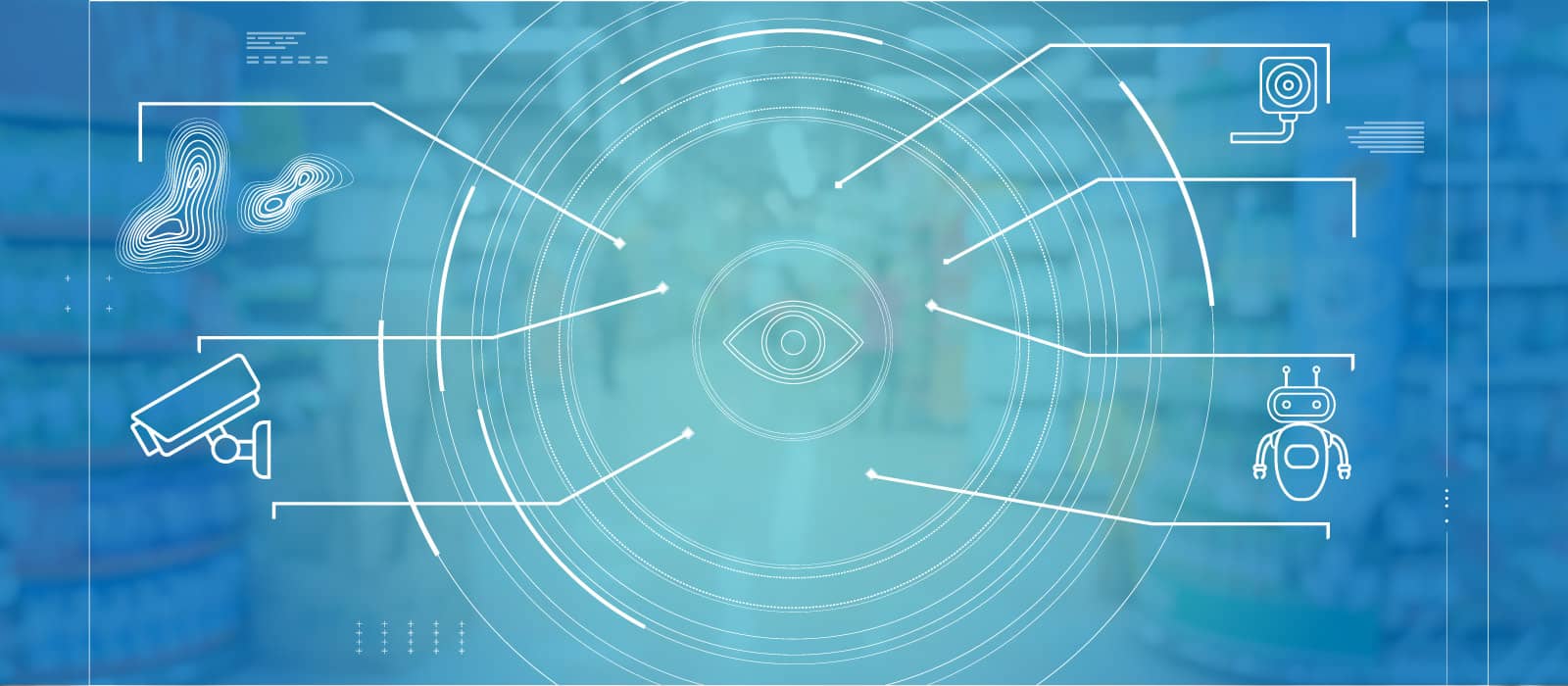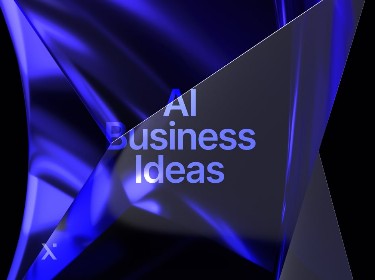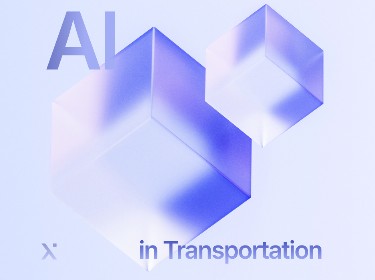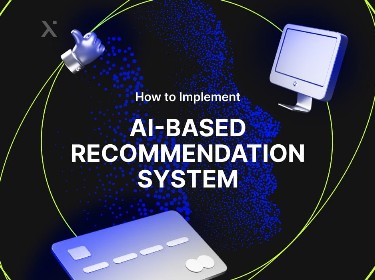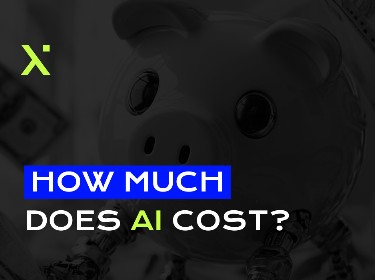Fascinating computer vision applications are shaping the new digital retail industry. Planning, analyzing customer behavior, attracting new customers, and managing products in stock have now been made much easier and more efficient.
The competitive nature of the retail industry is one of the main driving forces that has powered the evolution of unique and innovative apps for interacting with the customer base and attracting new consumers. Shoppers these days have a whole variety of options to select from when buying new items. They like to explore and research the options before deciding on purchasing a product. It is a continuous challenge for businesses to ensure efficient marketing and expand their consumer base.
Artificial intelligence-based solutions are being introduced not only for automation purposes but also to provide a better shopping experience. Computer vision has become one of the most dominant branches, enabling retail owners to easily accommodate the consumer according to their preferences, as well as create numerous new ways to market products, make long-term plans and streamline management.
What is computer vision?
Computer vision is the product of machine learning and data analysis allowing to mimic visual perception of physical objects and their surroundings. In short, it is the technology that helps machines understand visual information collected by cameras installed on the premises.
Computer vision systems employ image processing algorithms for preliminary processing of data, and machine learning or deep learning models to learn from it. The computing power of machines combined with state-of-the-art software allow these systems to extract valuable insights used by business owners to apply new strategies.
The rise of computer vision in retail
![]()
The retail sector across the globe is continuously expanding and progressing. In the US alone, the total retail sales in 2021 were $5.15 trillion. The retail industry is constantly looking to attract consumers, market merchandise effectively, improve customer experience and increase productivity. All this is made possible by a continuously evolving technology stemming from AI, machine learning, computer vision and deep learning.
The advancement in computer vision is revolutionizing the way businesses operate, and has accelerated the development of innovative applications that foster growth and increase efficiency.
See how we developed and launched this eCommerce solution in just 8 weeks
Heat maps as a valuable tool provided by computer vision
A heat map is a tool used for visualizing the strength or magnitude of an occurrence. Examples of heat maps include maps depicting population density, traffic flows, user visits to different parts of a web page, and etc. The concept of “hot” and “cold” areas is used to illustrate the areas of high and low activity, flow or density. For example, a Geo heat map has a geographical map overlaid with warm colors to show high temperature areas and cool colors indicating low temperature. To quantify an activity, it is becoming common to use red color to indicate higher activity or density, and green color for lower magnitudes.
Heat maps for retail
![]()
A typical heat map in a retail store is a shop image overlaid with a map showing the most or least visited parts of the store. Some software packages generate heat maps based not only upon the density of people walking through the aisles but also based upon the products they touch.
Cameras installed at various locations in the store take images that are processed through a computer vision layer which detects and tracks people and their movement. To safeguard a visitor’s identity, this system does not incorporate facial recognition or individual detection. Heat maps have many benefits and applications, including:
- Smart store layout & design
Retailers are now using heat maps to design their store according to the popularity of the sections visited by the customers. Areas visited often are made more spacious and less congested, removing spaces not visited at all. Heat maps are also used to increase the shopper’s time spent buying products. The layout of the aisles in accordance with the volume of the visitors improves shopping experience and the retail outlet’s overall productivity.
- Advanced product marketing
Knowing which areas of the store are more popular helps retailers to decide where to place items and capture the customer’s attention. New items are placed where most of the shoppers would get to see them. Additionally, when a new product is launched, the before and after pictures of heat maps enable the store managers to gauge the popularity of the product.
- Efficient staff placement
Store managers use heat maps to place more sales personnel in areas that are most visited in the store. This optimizes staff productivity and improves customer service.
- Optimized shopper’s waiting time
Heat maps are also being used to determine the waiting times of shoppers in queues during the course of the day. Busier times demand for a higher volume of staff, sales reps availability, and more active checkout counters. Leaner times can be planned accordingly to optimize labor and maintenance costs.
Computer vision-aided self-checkout
![]()
Many stores like Walmart, Target, Sainsbury, and other departmental stores are using traditional self-checkouts to accelerate the checkout process. Barcodes of individual items are scanned one at a time to receive the final bill and make the payment.
Computer vision is taking self-checkout one step further by eliminating the need for scanning barcodes. The automated system recognizes products and bills the customer accordingly. Some auto-checkout consoles also use facial recognition to deduct payments. This means less waiting time for the shopper and a quicker service as compared to conventional shopping checkout lanes.
Using auto-checkouts in stores is a win-win strategy for both customers and retailers. More staff can be employed to help customers shop, rather than spending the company’s resources on cashiers’ manual labor.
End-to-end product information management software
![]()
The competitive nature of the marketing industry has given rise to the need for associating contextual information with each individual product. For example, every item has its attributes such as color, dimensions, cost, warranty, supplier information, and retail outlet information associated with it.
A smart product information management (PIM) system manages not only the basic product information but also its context using a centralized software system. PIM systems also act as the source of product data for input to any marketing or distribution channel or analytics software.
In a smart PIM, customers can take a photo of a product, and computer vision software will help detect the product and provide detailed information about it. This eliminates the need for mundane scanning of barcodes. The product information is provided to the customer on the fly and includes basic info, user manual, customer reviews, and any other details about the product.
PIM systems can also use facial recognition to keep track of frequent customers and the products they buy. Targeted product promotions sent to their mobile phones and discount offers can be used to engage and motivate them to buy products.
Computer vision for the fashion industry
When it comes to the fashion industry, buying garments at brick and mortar stores is still preferred over online shopping. When buying clothing items and accessories, consumers prefer to see, feel, and try them on. The fashion industry is at the top of the list for using technology to provide a transformed customer experience.
The competitive market is resorting to new and innovative apps to attract more and more customers. The customers in turn are welcoming the advent of virtual shopping experience combined with the pleasure of visiting a brand outlet.
Virtual mirrors for the fashion industry
![]()
Virtual mirrors incorporate computer vision and augmented reality (AR) technology to allow users to try on different outfits in different sizes and colors without having to change and use the fitting room. A customer scans the code of a clothing item and the virtual mirror displays the image of the person in the outfit.
The lighting and background scene can also be changed to give the shopper a fairly good idea of how they would look in the outfit in various environments without having to actually physically wear it. John Lewis, one of the largest UK retailers, is already making use of Cisco StyleMe Virtual Fashion Mirrors in their store.
Virtual mirrors use gesture recognition algorithms to recognize user commands and they also feature a virtual cart. Once a buyer short lists an item for purchase, it is added to the virtual basket for later payment and checkout.
Check out how AR and VR technology can transform the fashion industry
Enhanced security and detection
It is quite common for shopping malls and retailers to have security cameras installed at various locations on the premises. Conventional systems need security staff to monitor the footage 24/7, which can be quite difficult in busy or crowded stores.
Computer vision technology has made considerable progress in providing enhanced security to brick and mortar retail stores. With cameras installed at various places in the shop, security software helps detect suspicious behavior, pinpoint shoplifters, and ultimately deter theft.
These systems can be further enhanced using previous footage of crime or theft, to be more reliable and accurate in identifying and preventing larceny. This also eliminates the need for engaging extra security personnel at various locations of the retail shop.
Computer vision-powered robot assistants
![]()
Retailers are using robot assistants to act as salespersons. Consumers can ask them questions to find items in the store using voice commands or by touching the display. Shoppers can provide a list of items they want to shop, and the robot guides them with the optimal routes around the store. The assistant also gives details about the product the customer wants to buy.
A robot like LoweBot deployed in San Francisco’s Lowes store is able to communicate with customers in different languages. Tally by Simbe Robotics is another example. These robots walk along the aisles of the store to take inventory of the items and record which shelves have to be replenished.
With AI and computer vision software, such robots are also designed to extract important shopping patterns and behaviors of customers and identify which items are more popular than the others. These intelligent agents help retailers make important decisions.
A case study: Just Walk Out shopping by Amazon Go
![]()
Amazon Go has launched a state of the art “Just Walk Out” shopping experience for its consumers. The brand’s stores have completely done away with cash registers. Customers need an Amazon app to enter the store. Once inside, they pick the items they need and walk out without going through a checkout counter or queue. Amazon later sends them an invoice and charges their account.
Behind the scenes of this innovative approach, a computer vision algorithm detects which items were picked up or returned to the shelf. A virtual cart keeps track of all items in the customer’s trolley and they are billed when they walk out of the store. It is all made possible by a variety of technologies including computer vision, deep learning and sensor fusion. It is the same technology that power self-driving cars.
Computer vision technology: real life examples
Check out the list below to find out which retail brands have already deployed computer vision technologies to extract great business outcomes:
| Technology / Task | Usage / Comments | Brands |
| Facial recognition | Identifying loyalty members and sending customized messages to their mobile phone | Lolli and pops |
| <span”>Skin identification | Skin health recognition from images from skin scanner | Neutrogena |
| Product image recognition | Customers take a picture of the product to bring up information on it | Home Depot |
| Robot assistant | Inventory checking | Schnuck, Giant Eagle, Walmart |
| Lowebot | Customer assistants | Lowes |
| Virtual mirror | Virtual shopping experience | John Lewis |
| Virtual artist | Overlay face image with various makeup products | Sephora |
| Heat maps | In store activity | Samsonite, Sephora |
| Just Walk out | Automated checkout | Amazon Go |
Conclusion
The sky’s the limit for novel ideas and innovations of computer vision technology. The future of retail is an amalgamation of the physical world and digital technology. Artificial intelligence combined with computer vision and analytics will pave the way for the retail industry to enhance a shopper’s experience, attract customers, and improve efficiency and reliability of business processes.
If you haven’t yet implemented this tech into your workflows, but are looking to take your business to the next level through innovation, get in touch with our computer vision company consisting of AI developers and retail software development company experts to make the best out of the newest technologies in your retail business.
